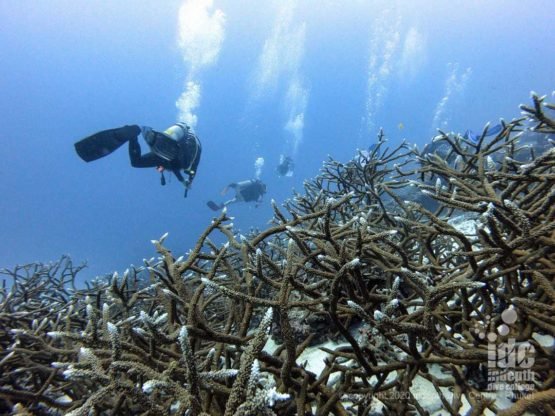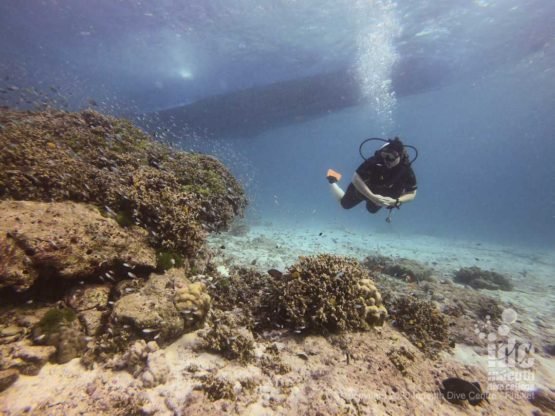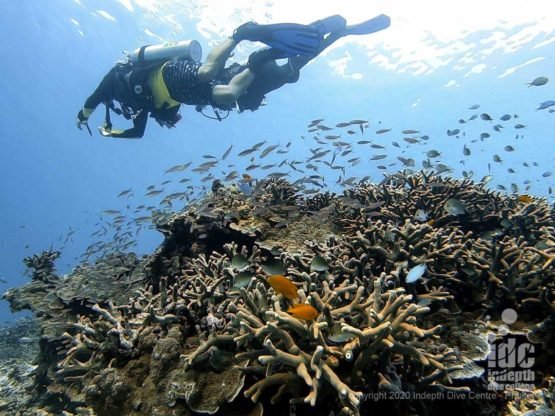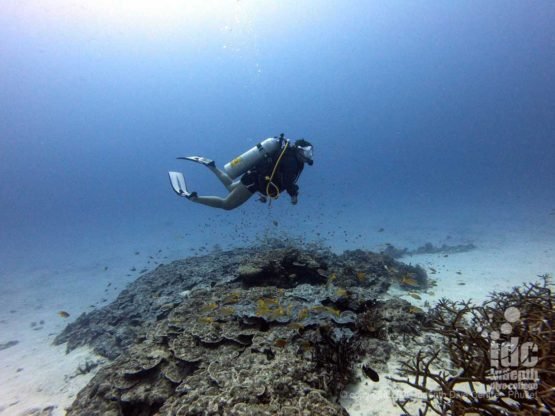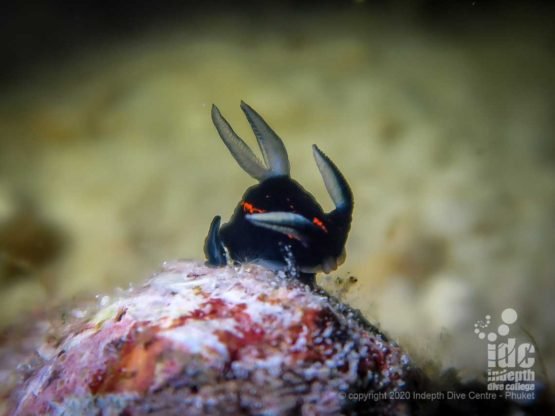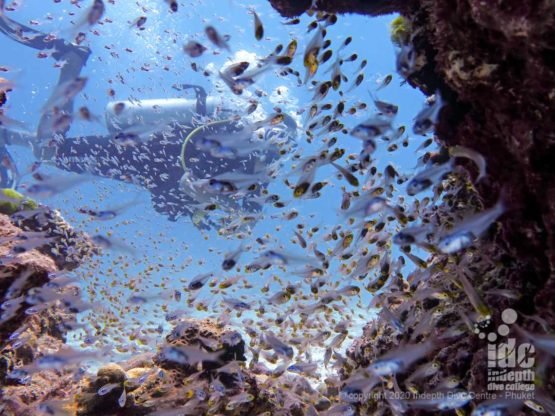
Similan Island No. 4: Honeymoon Bay / Hide Away Bay
Honeymoon Bay is located on the Eastern Side of Island No.4 with the dive site running the length of the Island.
There is a small beach at the Northern end of Honeymoon Bay which you can visit during the day. In fact you can walk through the Island to Princess Bay, which is a beach on the other side of the Island. Or for the more adventurous you can take the 15-20 minute hike up to the view point which overlooks Honeymoon bay out to the East. On this Island you can also spot the very rare Nicobar Pigeons and Hairy Legged Mountain Crabs.
Honeymoon Bay is a great dive site for both Day Dives and Sunset or Night Dives. And whilst it does drop off to more than 30m, most of the marine life can be found between 5-20m. Moreover you can find the usual marine life you expect to find in the Andaman Sea. This includes Garden Eels, Blue Spotted/ Kuhls Stingrays and Gobies out in the sandy areas. Additionally there are also rocky patches which are home to soft corals and anemones. If you haven't dived for a while, you are welcome to dive Phuket first on one of our Scuba Diving Day Trips.
Honeymoon Bay is an excellent place for the boat to remain moored overnight as this is sheltered in the most part from the wind ...
Honeymoon Bay great for Beginner Divers in The Similans
We start the dive normally by jumping from the back of the boat, assuming you are on one of the mooring lines. Honeymoon Bay is a sloping sandy reef which goes from 5m down to more than 30m.
Honeymoon Bay is great for beginner divers new to diving in The Similan Islands. This is due to the depths and nature of the dive site. The dive site is mainly made up of hard coral, especially Staghorn Coral which is home to many different species. Notably Angel Fish, Butterfly Fish, Trumpet Fish and Anemone Fish. There is all the usual Andaman Sea Marine life such as Moray Eels, Box Fish, Lion Fish, Scorpion fish, etc.
If you look carefully you may also be able to spot the very shy Comet Longfin in small caves and crannies. This can be tricky for beginner divers in The Similans. However if there is one visible then take a closer look as they normally live in families of 2 or more.
Honeymoon Bay dive sites runs from North to South and vice versa. The current can be quite strong here, especially around full / new Moon. If you are Night Diving you would normally return to the boat. Thus, dive North to South for half of the dive and then return to the boat the way you came at a shallower profile. Allowing for any current of course.
I am a beginner diver, can I do a Night Dive at Honeymoon Bay?
Most dives at Honeymoon Bay are Night Dives. This is because of the wealth of marine life that can be easily found here. Additionally, it is one of the best Similan Dive Sites for Night Dive Beginners. You should expect to see a large variety of Shrimps and Crabs here, along with the odd Spiny Lobster.
For beginner Night Divers we recommend the PADI Night Diver Specialty Course as it the best way to learn to Night Dive in The Similans. The Night Diver Course is 3 dives and can easily be added to your Similans Liveaboard Trip.
Giant Moray Eels can be seen free swimming or finding their way through the Staghorn Coral. Moreover if you are lucky enough to spot one, then follow its progress and you may well see it capture it’s dinner. This seems to often be Butterfly Fish for some reason? There are also many species of Lion Fish which are active at night, including the rarer Twin Spotted and Dwarf Lion Fish. In the sandy / rubble areas you can also spot Octopus and Cuttlefish on a Night Dive.
Rebreather divers find this a nice dive site to finish off any scrubber that maybe left from the day’s diving. Which can be followed by a shower and a Thai buffet, before repacking for the next day.
Remember to keep an eye out into the blue for large Barracuda hunting. And if you are lucky, the occasional White Tip Reef Shark which can be spotted in the deeper water. Just look for Green Eyes! Remember only Sharks and Rays have green eyes …
Overall this is an excellent place for a Sunset / Night Dive where you can expect to see a wide variety of marine life ...




